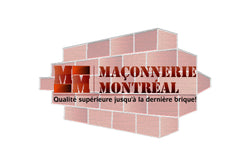Exploring Flashing Alternatives: Can I Replace Flashing with Other Materials?
In the bustling heart of Montreal, where the allure of old-world architecture meets modern design, the structural integrity of a building is paramount. At Maçonnerie Montréal, we pride ourselves on delivering top-tier masonry services. One of the intricate aspects of masonry is flashing. A recurring query we encounter is: Can I replace flashing with other materials? Let's delve deep into this topic to shed light on the matter.
Understanding the Role of Flashing in Masonry
Flashing, an essential component of masonry, acts as a barrier, preventing water from infiltrating the building. Typically installed at intersections and joints, it ensures that water is directed away from these vulnerable points. When flashing is compromised, it can lead to water seepage, which in turn can cause structural damage, mold growth, and other associated issues.
Why Consider Replacing Flashing?
Over time, flashing can deteriorate due to various factors such as weather conditions, physical damage, or poor installation. When this happens, homeowners often ponder whether they can replace flashing with alternative materials that might offer better durability or aesthetics.
Alternative Materials to Flashing
1. Rubberized Asphalt
This is a flexible and self-adhering material. It's resistant to extreme temperatures, making it a suitable choice for areas with varying weather conditions. Its elasticity ensures a snug fit, reducing the chances of water seepage.
2. Copper and Other Metals
Copper is a popular choice due to its durability and timeless appeal. It's resistant to rust and can last for decades. Other metals like aluminum and galvanized steel are also used, but they may not offer the same longevity as copper.
3. PVC and Other Plastics
Plastic flashings are lightweight and resistant to corrosion. They are also flexible, making installation easier. However, they might not be as durable as metal options, especially under direct sunlight.
4. Liquid Flashing
This is a sealant that can be applied to masonry joints. It forms a waterproof barrier once dried. It's a versatile option as it can adhere to various surfaces.
Factors to Consider When Choosing Alternative Materials
1. Durability
It's essential to select a material that can withstand the test of time and external factors like weather conditions.
2. Aesthetics
The material should complement the overall look of the building. For instance, copper flashing can add a touch of elegance to a brick structure.
3. Cost
While some materials might be more affordable initially, maintenance and replacement costs should also be considered.
4. Installation Complexity
Some materials require specialized skills for installation. It's crucial to ensure that the chosen material can be installed correctly to avoid future issues.
Consulting with Experts
Before making a decision, it's always best to consult with masonry experts. Our team at Maçonnerie Montréal can assess the condition of your existing flashing and provide recommendations based on your specific needs and preferences.
In Conclusion
While there are several alternative materials to traditional flashing, it's essential to make an informed decision. At Maçonnerie Montréal, we're not just masonry experts; we're your partners in ensuring your masonry stands tall and proud. With our services spanning Greater Montreal, Laval, Longueuil, South Shore, and North Shore, we're always at your service, ready to restore the glory of your masonry.

